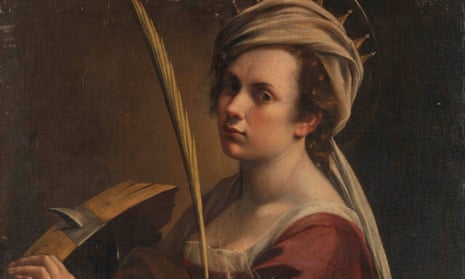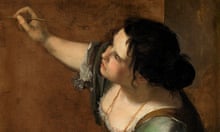A newly acquired painting expected to become one of the jewels of the national collection is to go on a “grand tour” of unusual and unexpected places.
The National Gallery on Wednesday unveiled what it labelled a “Christmas present for the nation”: its newly cleaned self-portrait by the most celebrated female artist of the Italian Baroque period, Artemisia Gentileschi.
Self Portrait as Saint Catherine of Alexandria, dating from about 1615-17, is the first painting by Gentileschi to enter a public collection in the UK. It has gone on display in London ahead of a national tour that will start in March at the Glasgow Women’s Library.
Gabriele Finaldi, the director of the National Gallery, said it was a “superb work by a major artist … the gallery has wanted to represent Artemisia for a long time”.
It is an important painting with a fascinating story but its acquisition has been clouded by claims that the gallery paid too much and that there are holes in its provenance history, which raised the possibility it was looted by the Nazis.
Finaldi poured scorn on that. “I think the story is a very foolish one,” he said. “There is no reason whatever to have any concerns about a Nazi provenance.”
He said they knew which family owned it, the Boudeville family in France, and that the ownership went back at least three generations. The last man known to have owned it in the 1940s was not known to be a collector and so probably inherited it.
Nevertheless, because there is no indisputable documentation about its provenance before the 1940s, the gallery has added it to its list of works that may have been “improperly acquired” or looted.
“It’s on our list because we don’t have hard written evidence and the list is there for that,” said Finaldi.
He also refuted the suggestion that the gallery paid too much, in that it was bought by a dealer at a Paris auction for €2.4m (£2.2m) and acquired by the National Gallery for £3.6m.
Finaldi said there were many reasons the gallery could not have bought it at auction including the lack of an export licence and questions around condition, attribution and provenance, all of which had now been resolved. “We paid a price which was less than we know other people were prepared to pay for it,” he said.
None of the money to buy it came from the public purse and its five months’ conservation was paid for by the Art Fund.
The painting is an example of a major gallery trying to right the historic wrongs of the past in that so many female artists have fallen through the gaps of art history. The National Gallery has an estimated 23 works by women in its collection.
There will be a grand tour of “unusual and unexpected” places, the gallery said, with full details to be announced. A major show, bringing together more than 35 Gentileschi works, is also planned for 2020.





